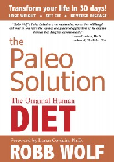
Know Facts
To Know Or Not To Know …




Vitamin A - retinol
Vitamin A is an important fat soluble vitamin. Carotenoids such as beta-
Vitamin A is important for rhodopsin or visual purple in the retina of the eye, immune response to combat infections and reduce inflammation, integrity of the skin and mucous membranes, key processes in the bones, cell growth and development (pregnancy and childhood), sperm production and quality, and the reproductive cycle in females. Vitamin A is stored in the liver.
Sources
 The richest source of vitamin A is liver including cod liver oil. Other good sources
of vitamin A are meat, eggs, milk products and fish oil.
The richest source of vitamin A is liver including cod liver oil. Other good sources
of vitamin A are meat, eggs, milk products and fish oil.
Many dark-
The more intense the color of the vegetable or fruit, the higher the beta-
Daily intake
The recommended daily intake for adult males is 900 micrograms (~3000 IU) and for adult females 700 micrograms (~2333 IU) . During pregnancy 70 micrograms (~233 IU) should be added and during lactation 500 micrograms (~1666 IU) should be added. (One microgram of Vitamin A is equal to 1/0.3 IU.)
Deficiency
Too little vitamin A can lead to “night blindness” and even dryness and opacity of
the cornea (xeropthalmia) leading to blindness, increased vulnerability to infections,
goose bump-
Excess
Toxicity can occur at levels as low as 15,000 IU per day. (One IU is equal to 0.3 micrograms of Vitamin A.) However, the average daily toxic dose is 120,000 IU. In people with renal failure, 4000 IU can cause damage. Also excessive alcohol intake can increase toxicity. Children can reach toxic levels at 1,500 IU/kg body weight.
Excessive vitamin A consumption can lead to nausea, irritability, reduced appetite, vomiting, blurry vision, headaches, hair loss, muscle pain, abdominal pain, weakness, drowsiness, and altered mental status. Chronic toxicity can cause dry skin, dry mucous membranes, fever, insomnia, fatigue, weight loss, bone fractures, anemia, and diarrhea.
Note that carotene forms like beta-
Copyright: Know Facts -